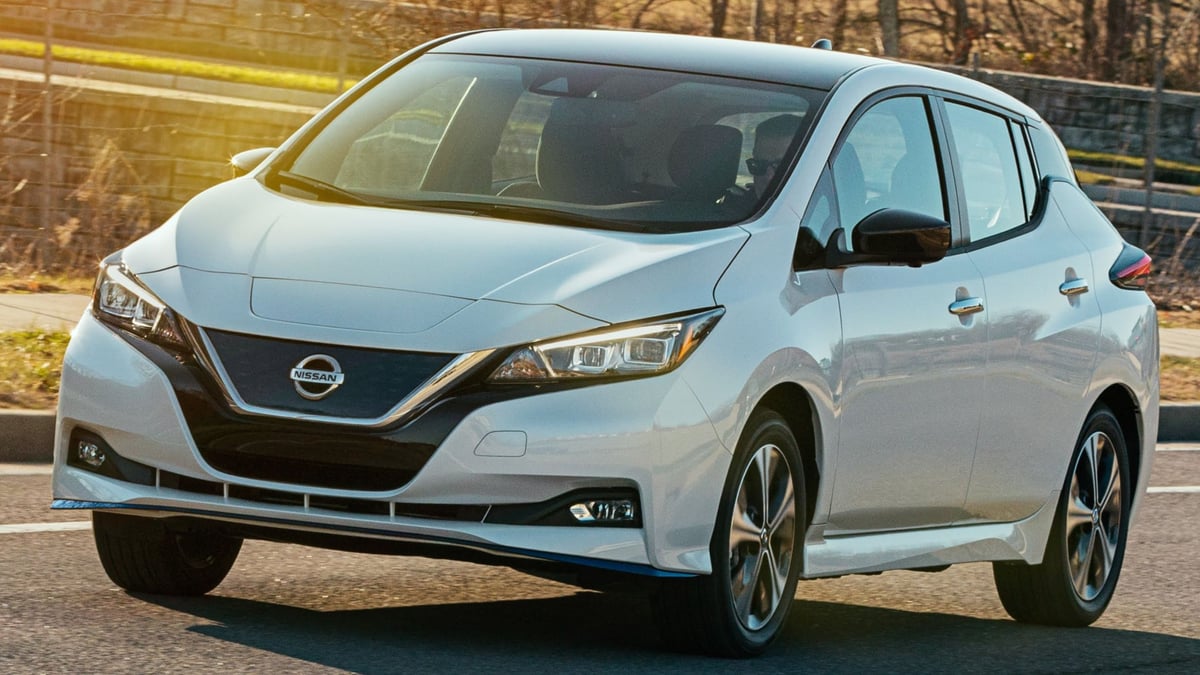
Ride & Handling: 6/10ĭriving the 2021 Nissan Leaf e+ is a normal experience that feels just like driving a regular-powered hatchback, though without engine noise, of course. But again, a Kona Electric offers 484km of range, which is much healthier. But in summer, the lack of water cooling for the battery packs could lessen that significantly as the car relies on air to cool the battery packs. With an official 18kWh/100km efficiency rating, Nissan claims that the Leaf e+ will travel a reasonable 385km on a charge (WLTP), and we found that to be fairly accurate having travelled 370km on a charge in our time with the car. Using a wall socket – something that many owners will do – will be an overnight affair. The Leaf e+’s 64kWh battery pack can be recharged in as little as 54 minutes using a 100kW DC fast charger – something the lesser Leaf cannot do – while using a 50kW charger increases that to 90 minutes. Its claimed 0-100km/h sprint time is just 6.9 seconds, which is quite close to the Ford Fiesta ST and quicker than the Kona Electric’s 7.6 second sprint time.

160kW is hot hatch from not too long ago power and because of that, the Leaf e+ feels peppy. Under the 2021 Nissan Leaf e+’s body is a 64kWh lithium-ion battery pack, which powers its 160kW/340Nm electric motor that sends power solely to the front wheels – these outputs are 50kW/20Nm more than the entry-level (and $10,000 cheaper) entry-level Leaf. More food for thought: the Tesla Model 3 and incoming Polestar 2 are available for around the same price, but are larger, better equipped and offer more range and better performance. While it costs around $5,000 more, the Kona in particular is far better equipped than the Leaf e+, and it offers 100km more of range. There are several competitors to the Leaf e+, including the Kia e-Niro Sport, Hyundai Kona Electric Highlander Extended Range and the expensive Mazda MX-30 E35 Astina. The one solid paint finish for the 2021 Nissan Leaf range is the ‘Arctic White’ our test car was painted in, while premium options for an extra $595 include ‘Magnetic Red’, ‘Vivid Blue’, ‘Pearl Black’, ‘Platinum Silver’, ‘Gun Metallic’ and ‘Ivory Pearl’, which is paired with a black roof ($995), while ‘Vivid Black’, ’Magnetic Red’ and ‘Gun Metallic’ can also be had with the black roof. Safety kit includes six airbags, auto emergency braking ( AEB) with pedestrian detection, lane keep assist with lane departure warning and lane trace assist, adaptive cruise control with stop and go functionality, blind-spot monitoring with rear cross-traffic alert, front and rear parking sensors, a 360-degree camera, auto high beam and traffic sign recognition.
2021 nissan leaf android#
Standard kit on the 2021 Nissan Leaf e+ includes LED lighting with LED daytime running lights, auto lights and wipers, single-zone climate control, a leather-wrapped steering wheel, leather and suede upholstery, heated front and rear seats, an 8.0-inch touchscreen with wired Apple CarPlay and Android Auto, digital radio, inbuilt satellite navigation, a seven-speaker Bose sound system, keyless entry and start, heated and auto-folding mirrors, 17-inch alloy wheels with eco tyres, an auto-dimming rear mirror, drive mode selection, rear privacy glass, front and rear fog lights, chrome door handles, a seven-speaker Bose sound system and adjustable battery regenerative braking. Of course, it’s an EV and they cost a lot to make, but just shy of $65,000 is a lot of money for a hatchback.



While the entry-level Leaf in Australia is priced at just over $53,000 drive away in Australia, the larger batteries in the e+ version tested here mean that it costs more: $64,990 drive away, to be precise. Considering its longevity in the market, is the 2021 Nissan Leaf e+ worth consideration if an electric vehicle is needed to whet your motoring appetite? Let’s find out. It was originally launched in 2010 (2011 in Australia) and the second-generation car seen here launched in 2019. As of September 2021, over 600,000 units of the Leaf have been sold and while this is partly due to its overall appeal, it’s also because it was actually the first mass-market electric vehicle the world had ever seen. Here’s a question for you: before the release of the Tesla Model 3, what was the world’s best-selling electric car? The larger Model S? The BMW i3? No, it was the Nissan Leaf.


 0 kommentar(er)
0 kommentar(er)
